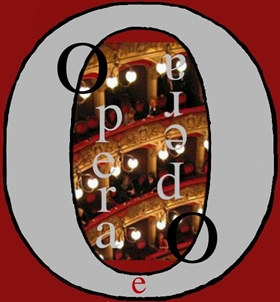by Natalia Dantas – Vincenzo Bellini's masterpiece inaugurates the 2025 Opera Season at the Teatro Massimo "Bellini" in Catania.
Norma is a "sacred" title in Catania and the people of Catania and, as such, awaited, desired, hoped for by the enthusiasts who populate the Massimo Teatro Etna.
On 18 January 2025, in the presence of high political authorities and numerous personalities, the theater dedicated to the divine Bellini once again resounded with his notes, at the inauguration of the 2025 Opera Season and at the opening of the celebrations of the one hundred and ninetieth anniversary of the composer's death.
The masterpiece, in the critical edition of Casa Ricordi, edited by Roger Parker, was entrusted to the baton of Maestro Leonardo Sini, born in 1990. The concertmaster and conductor demonstrated a maturity already capable of governing the large orchestral ensemble that populated the mystical gulf, as well as providing support to the interpreters. Excellent, therefore, is the permanent orchestra from Catania, at the helm of which Maestro Sini showed an ability to introject an evident, insistent listening to the greats who preceded him, but also a personal intervention that wanted to give a martial structure to the symphony , to the detriment of the dynamics a little’ flattened, and it was deemed appropriate to modulate the atmospheres of the work until, in the finale, choosing slowed down tempos and emphasizing a romantic atmosphere.

In the title role, in her debut, soprano Irina Lungu, who replaced the unavailable Jessica Pratt in the first cast. The test was difficult and certainly not supported by the eternal, wrong “comparison” with historical voices. The beautiful vocal color of the soprano, noted in the part of Beatrice Fiorica in "Il Berretto a sonagli" by Marco Tutino, by Pirandello, seen and reviewed in the world premiere again in Catania in 2024, as well as the "natural", modern and expressive to the point of realism that characterized it, they were dispersed here in a very different part, of Bel Canto, in which it is necessary not to "intubate" the vowels in order to distribute them in the same position in order to equip them all with the same harmonics, risking a drop in tone; and instead deploy a measured and as non-artificial song as possible, with notable projection, with a "blade" that far surpasses the mystical gulf and expresses every facet of the character, who is not cold.

Antonio Poli, in the part of Pollione, is a tenor with a robust tone, but with a problematic high zone and therefore high notes that are not easy to emit; however, he has beautiful color and good dramatic tension, but he only sang a high C. The other high notes, traditional or not, have failed the ear of the enthusiast. Singing the part of Pollione with high notes is not a choice of the individual singer, but an essential requirement of Bellini's vocality. Even playing the piano, as Poli mentioned, does not belong to Bellini's vocal style. So, if you want to do it, perhaps it would be better to opt for the opposite and follow the example of Domenico Donzelli, the first Pollione in history, who sang the high notes in falsetto.

The soprano Elisa Balbo, also making her debut in Bellini in Catania, gave voice to a supple Adalgisa with an intense ringing, expressive and dramatic, very well in part and obviously dominant in quality in the duets; while Carlo Lepore's Oroveso revealed a voice with an undulating delivery. Correct supporting actors, effective Chorus, directed by Luigi Petrozziello.

Hugo de Ana's direction gave rise to an interpretation of the masterpiece with neoclassical references, also through projections of masterpieces of art from the early 19th century, which were not found, however, either in the singing or in the orchestration and direction; with its beautiful Napoleonic-inspired costumes for the performers, but also varied in taste and chronology, thanks to which the women's choir seemed inspired by the paintings of Alma Tadema. The scenography was solemn and also of indefinite location, between the plinths of enormous columns; all totally devoid of references to the Druids, to the sacred Oak, except in a symbolic fall of autumn leaves, to the mistletoe and the shield of Irminsul, whose sound, in the final part of the work, was linked to the unexpected explosion of a firecracker at Norma's feet. A reference, perhaps, to a sort of "Celtic magic", which however certainly does not suit either the figure of the priestess or the ears of the spectator. Final with spears, unusual and bloody.
Overall applause heard from a decidedly packed theatre.
Natalia Dantas
Photo of James Orlando


